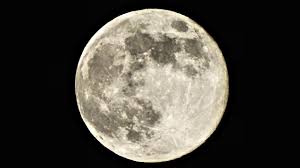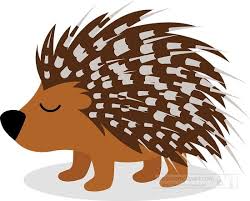Connected Learning Events
The Moon's Impact on Life on Earth (12/15/25)
December 15, 2025
10:10 am

The Moon of Earth is not just a pretty sight in the sky- it actually has a strong effect on our planet. The Moon creates the tides on Earth, regulates Earth’s rotation rate, and may have helped with the emergence of life on Earth billions of years ago. In this lesson, we’ll talk more about how the Moon affects the Earth, and what life might be like (if it’s even possible) without our Moon.
Audience:
Grades 4-8
Facilitator:
Presenter:
Dr. Valerie Rapson (Astronomer)
Museum Live! Holidays around the World (12/15/25)
December 15, 2025
11:00 am

Learn about traditions passed from generations from all around the world. This episode will discuss Diwali, Hanukkah, Las Posadas, Kwanzaa, Chinese New Year, and Ramadan.
Audience:
Grades K-5
Facilitator:
Presenter:
The Durham Museum
Interactive Poetry Assembly (K-2) (12/15/25)
December 15, 2025
12:10 pm

Darren Sardelli is a fun, animated author who knows how to get everyone excited about poetry! In his lower grade assembly, students solve poetry riddles, illustrate poems with their imaginations, become characters in Darren’s poems, learn about rhythm and rhyme, and experience the joy of words. Older students discover how to put ideas in motion, make their poems and stories stand out, learn how to empower themselves with words, use their imaginations to make objects (and life) more interesting, and participate in Poetry Challenges that get them in the mood to write. Participants will be motivated to read and write poetry, start an idea book, and think in a creative direction.
Audience:
Grades K-2
Facilitator:
Presenter:
Laugh-A-Lot Poetry
Interactive Poetry Assembly (3-6) (12/16/25)
December 16, 2025
10:10 am

Darren Sardelli is a fun, animated author who knows how to get everyone excited about poetry! In his lower grade assembly, students solve poetry riddles, illustrate poems with their imaginations, become characters in Darren’s poems, learn about rhythm and rhyme, and experience the joy of words. Older students discover how to put ideas in motion, make their poems and stories stand out, learn how to empower themselves with words, use their imaginations to make objects (and life) more interesting, and participate in Poetry Challenges that get them in the mood to write. Participants will be motivated to read and write poetry, start an idea book, and think in a creative direction.
Audience:
Grades 3-6
Facilitator:
Presenter:
Laugh-A-Lot Poetry
Perry the Porcupine Part 3 (12/16/25)
December 16, 2025
12:10 pm

Allow your students to be introduced to the exciting world of problem solving, creative thinking, and mathematical reasoning through the excitement of stories. Steve will enchant the students with his wonderful stories while sneaking in some math activities. He will keep your students engaged and laughing from start to finish.
Audience:
Grades K-3
Facilitator:
Presenter:
Living Maths
Adapta-bee-lity: How Native Bees Survive in a Changing World (12/16/25)
December 16, 2025
1:10 pm

This STEM lesson explores the incredible adaptations of native bees and how they respond to environmental changes. Students will examine how climate change, habitat loss, and pesticide use impact bee survival and discover how bees demonstrate resilience through unique behaviors and traits.
Audience:
Grades 2-5
Facilitator:
Presenter:
Planet Bee
Spacing Out with Talia (12/17/25)
December 17, 2025
10:10 am

Bring the wonders of space straight to your classroom with Museum of Science space educator and expert, Talia. From gravity-defying missions and orbiting tech to black hole mysteries and star activity, this live, interactive event covers current events from the past few weeks in space that will spark curiosity and inspire future innovators.
Audience:
Grades 5-8
Facilitator:
Presenter:
Museum of Science
Holidays around the World (12/17/25)
December 17, 2025
11:00 am

Join the Durham Museum for a free digital program highlighting the history of holiday traditions around the world. This 30-minute virtual zoom program will include museum educators sharing about long-established customs that have been passed through generations of people from different cultures. This program gives a peak at The Durham’s largest indoor Christmas tree, and we will discuss the hilarious way it gets into our building each year, a 94-year tradition! Some objects from other culture’s traditions include diya, the menorah, pinata, the seven principles, a lion puppet, and eid al fitr decorations. We hope you will tune in to this holiday program!
Audience:
Grades K-5
Facilitator:
Presenter:
The Durham Museum
Ideologies and Methods of Rule: Totalitarianism (12/17/25)
December 17, 2025
12:10 pm

This program will define and discuss totalitarianism, explore the unique characteristics of totalitarian societies, and show examples of the tools used in this method of rule.
Audience:
Grades 7-12
Facilitator:
Presenter:
Victims of Communism Memorial Foundation
Next Time You See a Snowflake (12/17/25)
December 17, 2025
1:00 pm

In this interactive virtual story time, we read Next Time You See a Snowflake by Emily Morgan, a book that explores the science of snowflakes. Join us to learn more about these natural wintery wonders.
Audience:
Grades K-6
Facilitator:
Presenter:
Mote Marine Laboratory & Aquarium
Fun and Famous Holiday Poems (12/17/25)
December 17, 2025
1:10 pm

Holiday poetry is a tradition that goes back centuries. Discover some of the most enduring holiday poems, from perennial favorites such as “A Visit from St. Nicholas” and “Over the River and Through the Woods” to modern classics and humorous holiday verse.
Audience:
Grades 1-4
Facilitator:
Presenter:
Kenn Nesbitt's Poetry4Kids
Sea Turtle Rescue and Rehabilitation (12/18/25)
December 18, 2025
1:00 pm

Learn about the injuries and rehabilitation process at Sea Turtle Inc. This live presentation by Sea Turtle, Inc. will last approximately 30 to 40 minutes.
Audience:
Grades K-6
Facilitator:
Presenter:
Sea Turtle, Inc.
Forces, Friction, and Movement (12/18/25)
December 18, 2025
2:10 pm

Learn how objects really move! In this science workshop, we’ll look in-depth at how push and pull forces act to move objects. Students will be guided by our presenter in exploring push and pull forces, which variables impact friction between two surfaces and how this affects an object’s movement, rotational forces in a variety of objects, and inertia & momentum… just what does this mean? In addition, time will be spent ensuring that students understand how inertia works. Newton would be happy here with this STEM content!
Audience:
Grades 4-8
Facilitator:
Presenter:
Fizzics Education

Nonfiction science author Ginjer Clarke shares fun facts, myth-busters, and exciting animal adventures with select excerpts from her title "Reindeer: On the Move!" Along the way, she will share information about migrations, adaptations, and habitats using maps and photos to provide additional content.
Audience:
Grades 1-3
Facilitator:
Presenter:
Ginjer L. Clarke (Author)
Insects in Winter (12/19/25)
December 19, 2025
12:10 pm

Ever wonder what happens to insects in the winter? Do they all migrate like the Monarch? With the help of a simple experiment and specimens, explore how they use plants to survive the winter.
Audience:
Grades 4-6
Facilitator:
Presenter:
Royal Botanical Gardens
Chat with a Ranger - A Day in the Life (12/19/25)
December 19, 2025
1:00 pm

Zion National Park is one of over 400 National Park Service areas. The National Park Service “conserves the scenery and the natural and historic objects and the wildlife therein and to provide for the enjoyment of the same in such manner and by such means as will leave them unimpaired for the enjoyment of future generations.” Park Rangers work at National Park sites to help protect these areas. There are different kinds of rangers who work at parks in a variety of positions that all work towards preserving and conserving the park. Zion National Park preserves an area of southwest Utah with massive sandstone cliffs, narrow slot canyons, and a unique array of plants and animals.
Audience:
Grades 7-12
Facilitator:
Presenter:
Zion National Park
How to Trick a Christmas Elf (12/19/25)
December 19, 2025
1:10 pm

Legend has it that the only way to find out if you’re on Santa’s naughty or nice list is to trick an elf into letting you sneak a peek! But be careful: elves are tricky themselves! To get a look at the list, you’ll need to be clever in crafting a distracting craft to catch the elf’s attention. So, grab some Christmas supplies like ribbons, twinkle lights, bows, and candy canes, and get prepared for your sly holiday visitor!